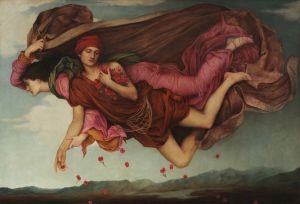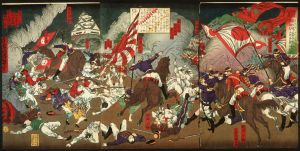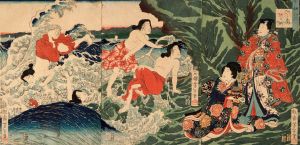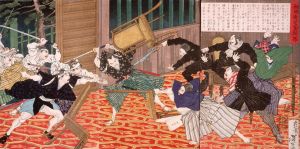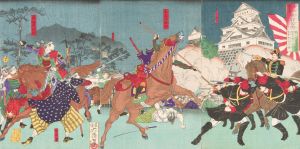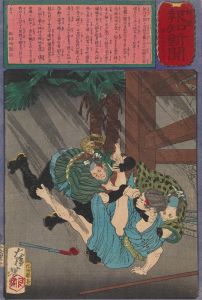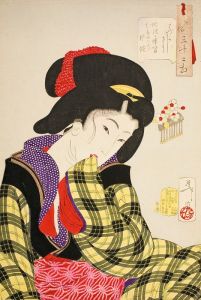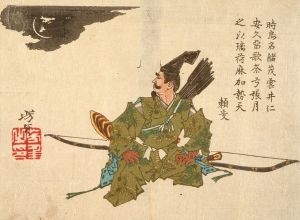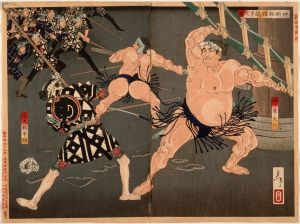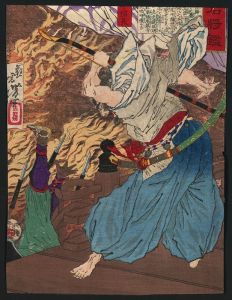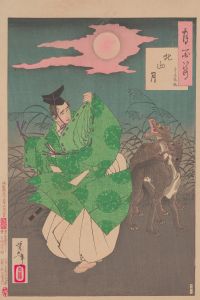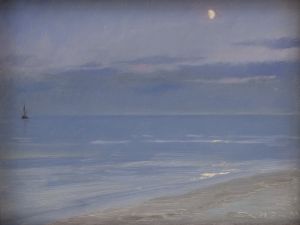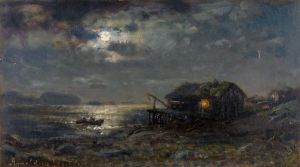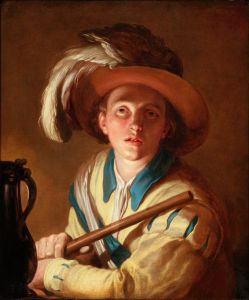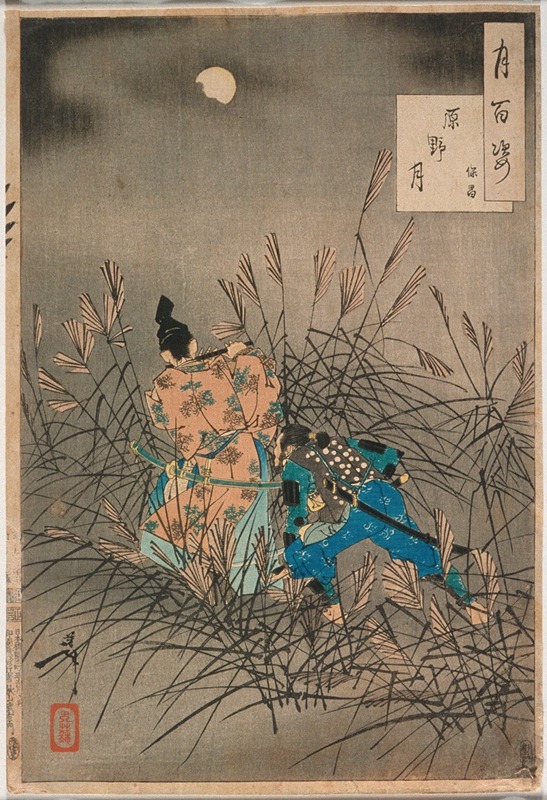
Fujiwara no Yasumasa Playing the Flute by Moonlight on an Open Moor
A hand-painted replica of Tsukioka Yoshitoshi’s masterpiece Fujiwara no Yasumasa Playing the Flute by Moonlight on an Open Moor, meticulously crafted by professional artists to capture the true essence of the original. Each piece is created with museum-quality canvas and rare mineral pigments, carefully painted by experienced artists with delicate brushstrokes and rich, layered colors to perfectly recreate the texture of the original artwork. Unlike machine-printed reproductions, this hand-painted version brings the painting to life, infused with the artist’s emotions and skill in every stroke. Whether for personal collection or home decoration, it instantly elevates the artistic atmosphere of any space.
"Fujiwara no Yasumasa Playing the Flute by Moonlight on an Open Moor" is a renowned woodblock print created by the celebrated Japanese artist Tsukioka Yoshitoshi. This artwork is part of Yoshitoshi's series "One Hundred Aspects of the Moon" (Tsuki hyakushi), which was published between 1885 and 1892. The series is considered one of Yoshitoshi's masterpieces and showcases his exceptional skill in capturing the interplay of light, shadow, and emotion.
The print depicts Fujiwara no Yasumasa, a historical figure from the Heian period (794-1185) in Japan, known for his talents as a poet and musician. Yasumasa is shown playing the flute under the moonlight on an open moor, a scene that evokes a sense of tranquility and solitude. The composition is notable for its use of space and the way it captures the serene atmosphere of the night. The moon, a recurring motif in Yoshitoshi's work, is depicted in the background, casting a gentle glow over the scene.
Yoshitoshi's choice of subject reflects his interest in historical and legendary figures, as well as his fascination with the moon, which is a symbol of beauty and mystery in Japanese culture. The print is characterized by its delicate lines and subtle color palette, which enhance the ethereal quality of the scene. Yoshitoshi's ability to convey emotion and narrative through his art is evident in this work, as the viewer is drawn into the peaceful yet haunting world of Yasumasa's music.
The historical context of the print is significant, as it was created during the Meiji period (1868-1912), a time of great change and modernization in Japan. Yoshitoshi's work is often seen as a bridge between traditional Japanese art and the new influences that were emerging during this era. His prints, including "Fujiwara no Yasumasa Playing the Flute by Moonlight on an Open Moor," are celebrated for their technical excellence and their ability to capture the essence of Japanese culture and history.
Yoshitoshi's "One Hundred Aspects of the Moon" series is highly regarded for its artistic and cultural significance. Each print in the series explores different themes related to the moon, drawing on historical, literary, and mythological sources. "Fujiwara no Yasumasa Playing the Flute by Moonlight on an Open Moor" is one of the most famous prints in the series and is often cited as an example of Yoshitoshi's mastery of the woodblock print medium.
Today, Yoshitoshi's work is appreciated by art collectors and historians alike, and his prints are held in high esteem for their beauty and craftsmanship. "Fujiwara no Yasumasa Playing the Flute by Moonlight on an Open Moor" continues to be admired for its evocative portrayal of a moment in time, capturing the harmony between man, nature, and the moonlit night.





